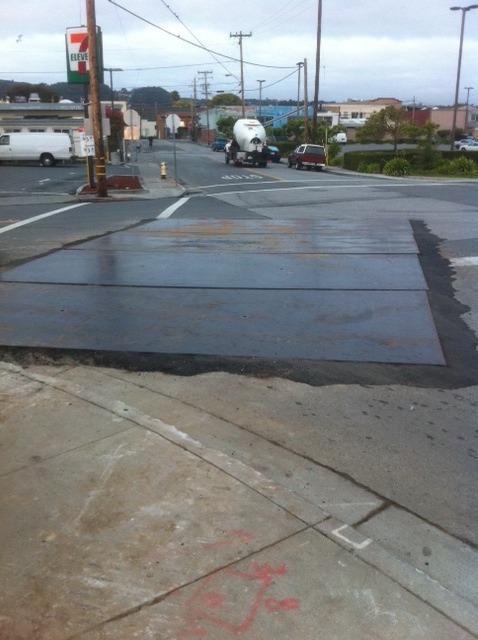Road Plate Steel Fundamentals Explained
Wiki Article
Steel Road Plate for Dummies
Table of ContentsExamine This Report on Road PlateA Biased View of Steel Road PlatesMore About Road Plate SteelHow Road Plates can Save You Time, Stress, and Money.
Box culverts are economical due to their strength as well as monolithic action and separate foundations are not required. It is made use of in special instances, weak structure.Normal compaction requirements for a task may range from 90% to 95% of typical Proctor for non-structural areas to 98% or more of changed Proctor for heavily crammed pavements. Proctor examinations are soil moisture-density connection examinations that establish maximum dry density (the device weight of the dirt minus the weight of water) as well as the optimum water material for soil examples.
Water is included to 4 to 6 sections of the dried soil sample in enhancing quantities. The completely dry density increases as the included moisture lube the soil fragments and also make it possible for better compaction from the same applied power.

Getting My Road Plate To Work
Thickness as well as moisture outcomes are plotted versus the original laboratory curve to verify a suit. In scenarios where lab details is not available, the area factor outcomes might be contrasted to a family of curves put together from neighborhood or local soil data to pick the best optimum thickness and also optimal wetness contour.A dirt compaction test uses one of numerous techniques to gauge the dry density and dampness material of the soil in area. The 3 most typical are discussed below - road plate. Arise from these area examinations are contrasted to the Proctor examination outcomes of the same dirt established busy and the proportion is revealed as the percent compaction.
1ft (2,830 g/cm). Thickness test devices such as mallets, scoops, knives, and also sample bags are used throughout excavation. All the excavated product is meticulously gathered and also conserved in an airtight container. The pre-weighed Sand Cone Thickness Apparatus is inverted onto the base plate and the steel cone is nestled into the base plate opening.
Later, the partially loaded apparatus is evaluated once again, and the quantity of the examination hole is calculated by separating the mass of the sand filling the hole by the bulk density of the sand. The damp weight of the recuperated dug deep into dirt is divided by the test hole volume to figure out her comment is here the damp thickness.
The Single Strategy To Use For Road Plate Steel
The percent compaction for the area thickness examination is determined by separating the completely dry thickness of the soil by the optimum dry density from the proctor test. Pros, Cons, Accurate and also trusted; a long background of approved use, Tests may take thirty minutes or more to complete, ASTM common test method, Hefty equipment in the area might require to pause procedure briefly, Does not need extensive training, Alternative tests must be made use of where significant amounts of sites +1 - road plate.
The tests are a little bit easier to carry out than the sand cone and also can be duplicated quickly given that the water is preserved in the vessel. Pros, Disadvantages, Accurate and dependable; a lengthy background of accepted usage, Tests may take 15-20 mins or more to complete, ASTM common test approach, Balloon membrane layers can penetrate during screening, Does not need substantial training, Meant for fine-grained or granular dirts without muches of rugged product, No licensing or allowing required for use, Ought to not be utilized to evaluate soft saturated, highly plastic dirts, Several examinations can be carried out without altering density media, All dug deep into material must be meticulously removed, Equipment is affordable Dampness web content and also unit weight must be done on maintained dirt samples from either a sand cone or rubber balloon tests to finish calculations for dirt compaction.
The graph below programs a couple of different approaches that can be made use of for moisture resolutions as well as there are a variety of ranges and also balances that can be used for weighing dirt examples in lab or area setups. Nuclear thickness see assesses figure out soil thickness by measuring gamma radiation transmission between a probe containing a radioactive Cesium 137 (or other) source as well as Geiger-Mueller detection sensors in the base of the scale.
The Best Strategy To Use For Road Plate Steel
Soil dampness is gauged at the exact same time utilizing a different resource of Americium 241. A steel pole is driven into the dirt at the test site, creating a pilot opening. The probe containing the radioactive resource is decreased up to 12in (305mm) into the pilot opening, as well as radiation transmission is gauged for one minute.
Report this wiki page